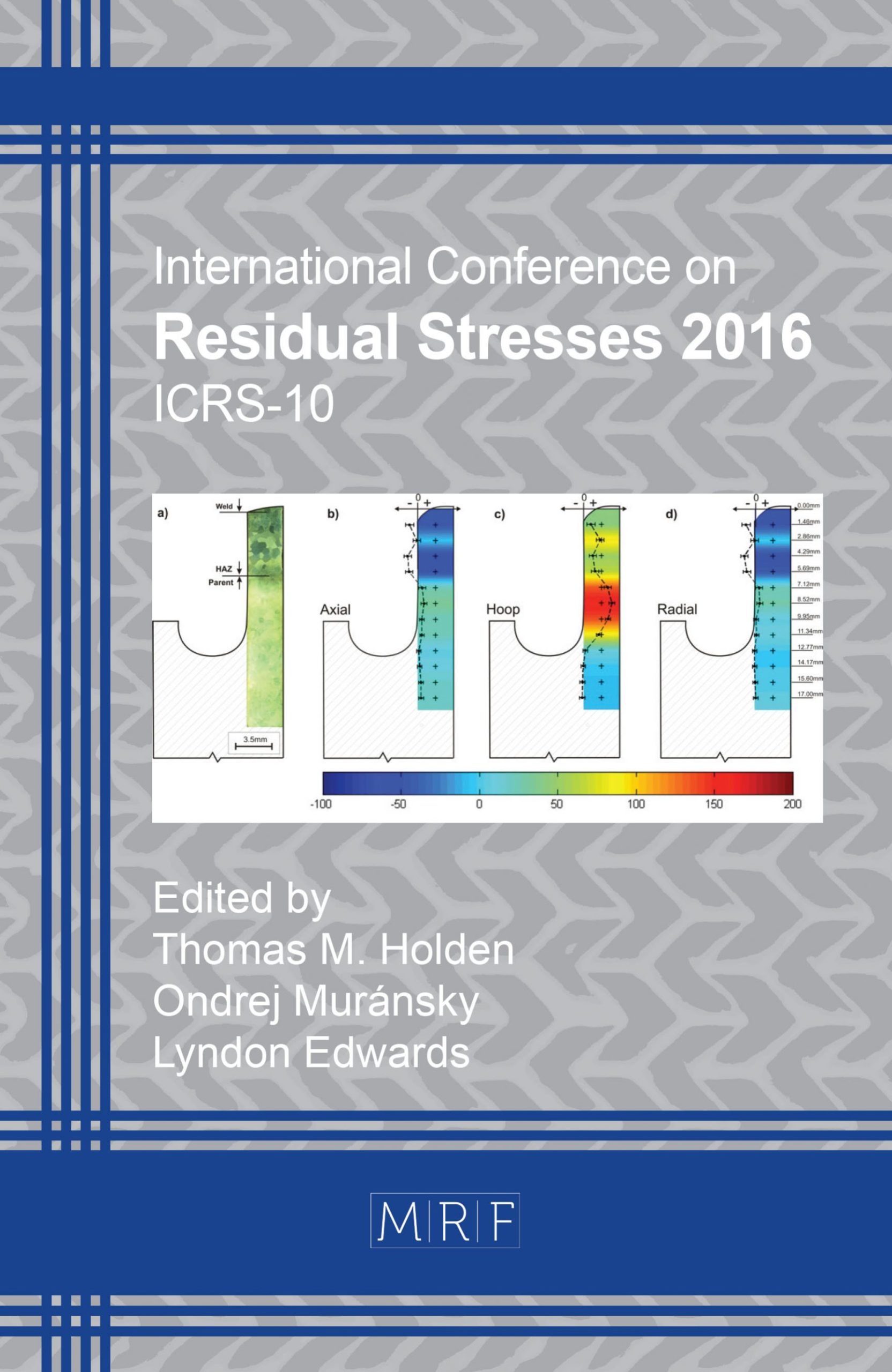Residual Stress Measurements Inside a Small Inner Diameter Hole at Low Bragg Angle Using X-Ray Diffraction Technique
M. Belassel, J. Pineault, M. Brauss
download PDFAbstract. A new X-Ray diffraction (XRD) goniometer has been specially developed to nondestructively measure residual stress (RS) on the inner diameter (ID) of small holes in metal and ceramic components. The major advantage of this novel goniometer is its ability to perform RS measurements on the ID of small holes without the need to section the component, thus maintaining the integrity of the residual stress field inherent to the component of interest. This new patented XRD goniometer has been used on a wide variety of aerospace components on features such as holes in airframe/structural components, as well as fastener/bolt holes, air holes, and confined areas on rotating and non-rotating turbine engine components. In many instances, measurements can be performed at 2Ɵ angles much lower than the widely accepted lower limit of approximately 130°. The selection of the actual Bragg angle used depends upon the material itself, the hole ID, and the thickness of the component. Results obtained indicate that the new goniometer can be used to measure RS on the ID of small holes with good accuracy and precision even at relatively low 2Ɵ angles in the vicinity of 100°.
Keywords
Residual Stress, Bolt-Hole, Inner Diameter, Low Bragg Angle, Abusive Machining
Published online 12/22/2016, 6 pages
Copyright © 2016 by the author(s)
Published under license by Materials Research Forum LLC., Millersville PA, USA
Citation: M. Belassel, J. Pineault, M. Brauss, ‘Residual Stress Measurements Inside a Small Inner Diameter Hole at Low Bragg Angle Using X-Ray Diffraction Technique’, Materials Research Proceedings, Vol. 2, pp 37-42, 2017
DOI: http://dx.doi.org/10.21741/9781945291173-7
The article was published as article 7 of the book Residual Stresses 2016
![]() Content from this work may be used under the terms of the Creative Commons Attribution 3.0 licence. Any further distribution of this work must maintain attribution to the author(s) and the title of the work, journal citation and DOI.
Content from this work may be used under the terms of the Creative Commons Attribution 3.0 licence. Any further distribution of this work must maintain attribution to the author(s) and the title of the work, journal citation and DOI.
References
[1] V. Hauk, “Structural and Residual Stress Analysis by Nondestructive Methods”, Elsevier, Amsterdam, 1997.
[2] J.A. Pineault, M. Belassel, M.E. Brauss, “X-Ray Diffraction Residual Stress Measurement in Failure Analysis”, Failure Analysis and Prevention, Vol. 11, ASM Metals Handbook, American Society for Metals, 2002, p. 484-497.
[3] M.Brauss, Proto Patent No. US 7,283,612 B2, issued October 16, 2007 for X-Ray Diffraction Method.
[4] Noyan I.C. and Cohen J.B., ‘Residual Stress’, Springer Verlag, 1987.
http://dx.doi.org/10.1007/978-1-4613-9570-6
[5] ASTM E915-10, “Standard test method for verifying the alignment of x-ray diffraction instrumentation for residual stress measurement”.
[6] M. Belassel et al., “Effect of Thermal and Mechanical Loading on the Generation of Macro and Micro Stresses in Eutectoid Steel”, Proc. 4th Int. Conf. Residual Stresses, ICRS 4. Soc. Exp. Mechanics, 1994, 392-401.
[7] J. Lu et al. “Handbook of Measurement of Residual Stresses”, SEM, Published by the Fairmont Press, Inc., 1996.































